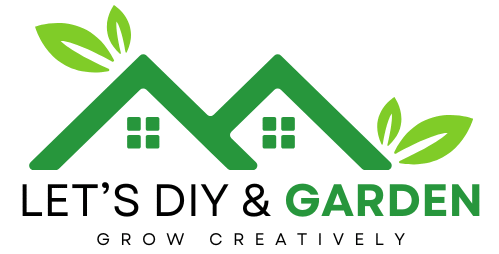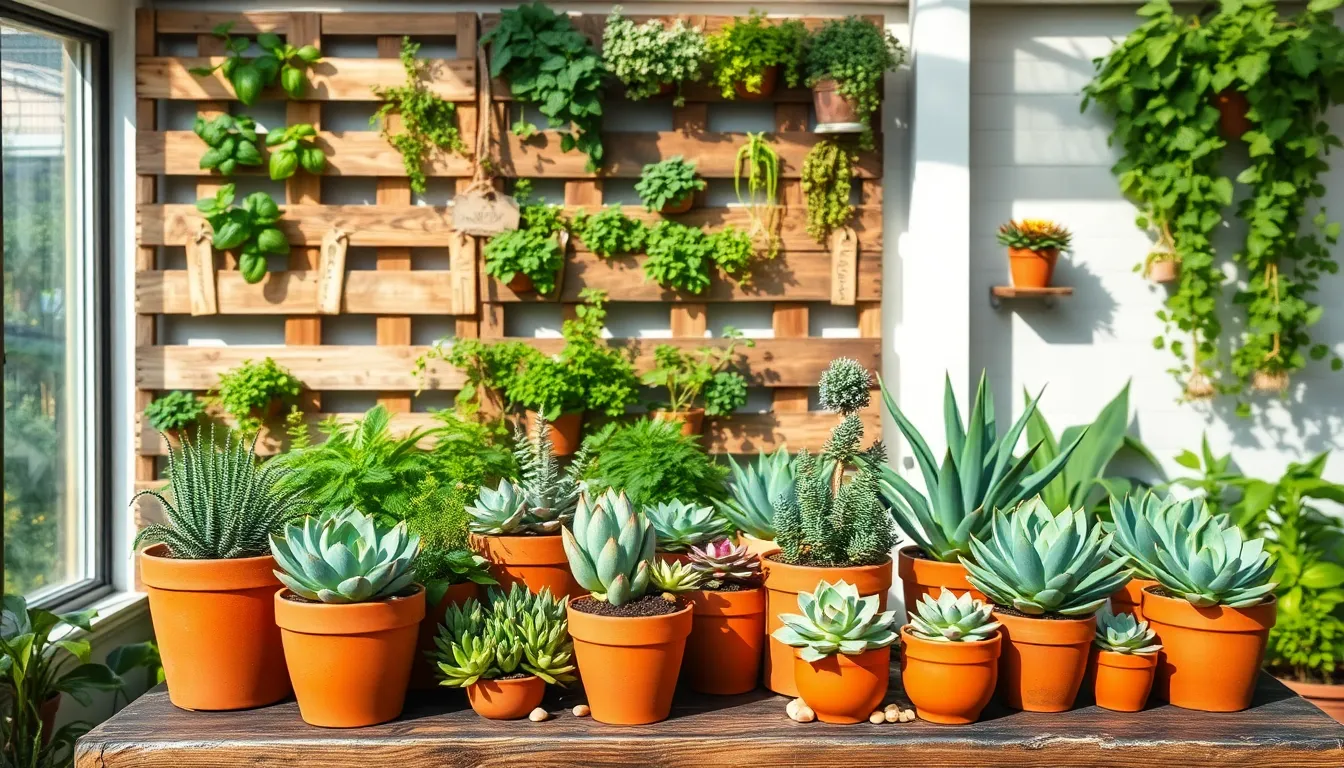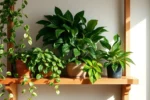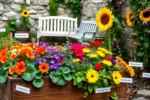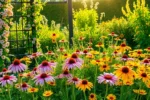Imagine stepping into your own lush, thriving oasis, right in the heart of your bustling urban life or cozy suburban corner. Whether you’re a beginner eager to dip your fingers into the soil for the first time or a seasoned gardener looking to maximize your green thumb in a compact space, “Simple Gardening Ideas for Small Spaces” is your gateway to transforming even the tiniest nooks into vibrant gardens. This guide celebrates the joy that comes from nurturing life and watching it bloom, promising you a sense of accomplishment and serenity amidst your daily routine.
Small spaces need not limit your gardening ambitions; rather, they offer a unique canvas for creativity and innovation. In this carefully curated collection, you’ll discover practical, space-savvy techniques and plant ideas that not only enhance your living area but also enrich your life with fresh produce, fragrant flowers, and lush greenery. By embracing these straightforward yet ingenious strategies, you will find yourself empowered to cultivate beauty and sustenance, making the most of every inch with confidence and delight.
Maximize Vertical Growing Space
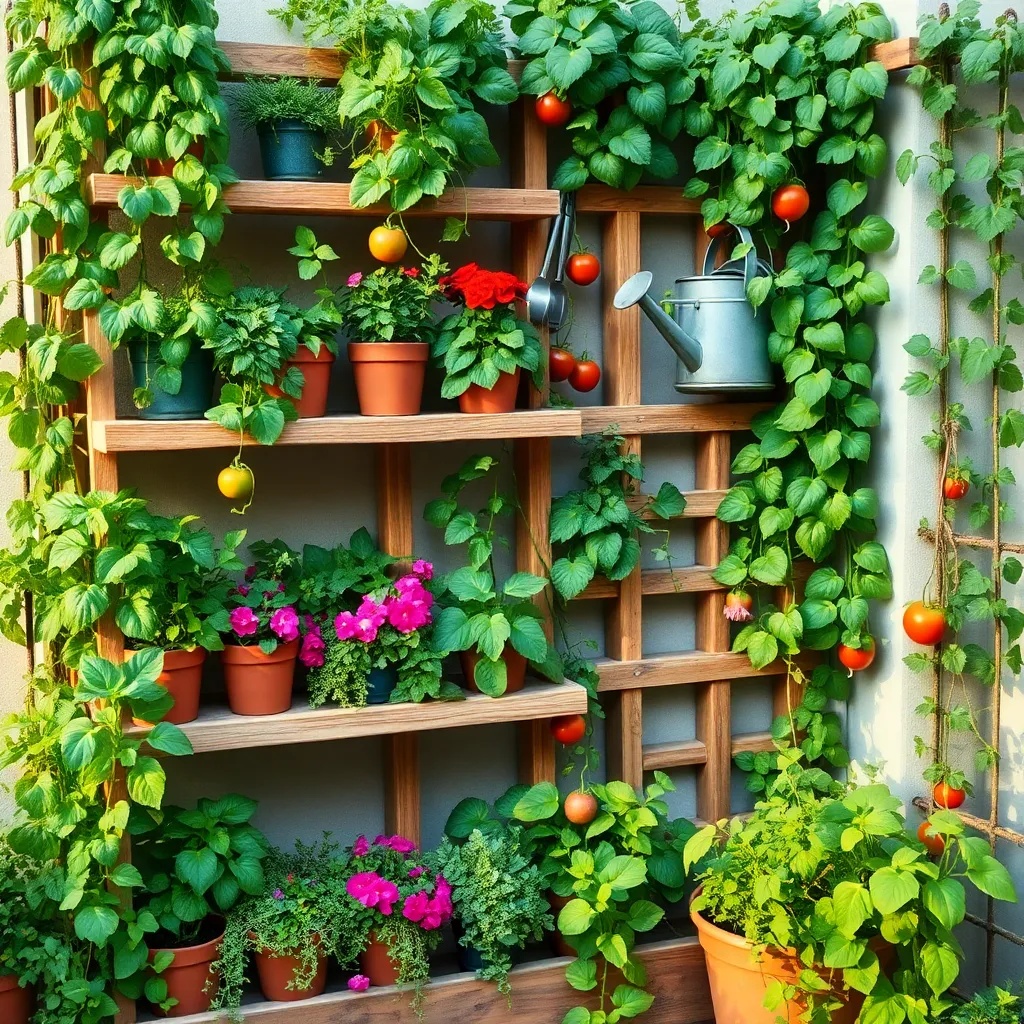
Utilize vertical growing space by installing wall planters or hanging baskets, ideal for small spaces. These structures allow you to grow a variety of plants, from herbs like basil and thyme to cascading flowers such as petunias and nasturtiums, without taking up ground space.
Consider using a trellis to support climbing plants, which can transform a blank wall into a lush, green canvas. Climbers like peas, beans, and even certain varieties of tomatoes thrive when given the vertical room to stretch, making them perfect for small gardens.
For a more advanced approach, try creating a vertical pallet garden by attaching a pallet to a wall and filling it with soil and plants. Succulents, lettuce, and strawberries are excellent choices for this type of setup due to their shallow root systems and adaptability.
Ensure good drainage and light exposure when setting up your vertical garden to prevent waterlogging and ensure healthy growth. Aim to water these setups more frequently but with less volume, allowing the water to trickle down through the tiers and reduce the risk of root rot.
Utilize Window Sills Efficiently
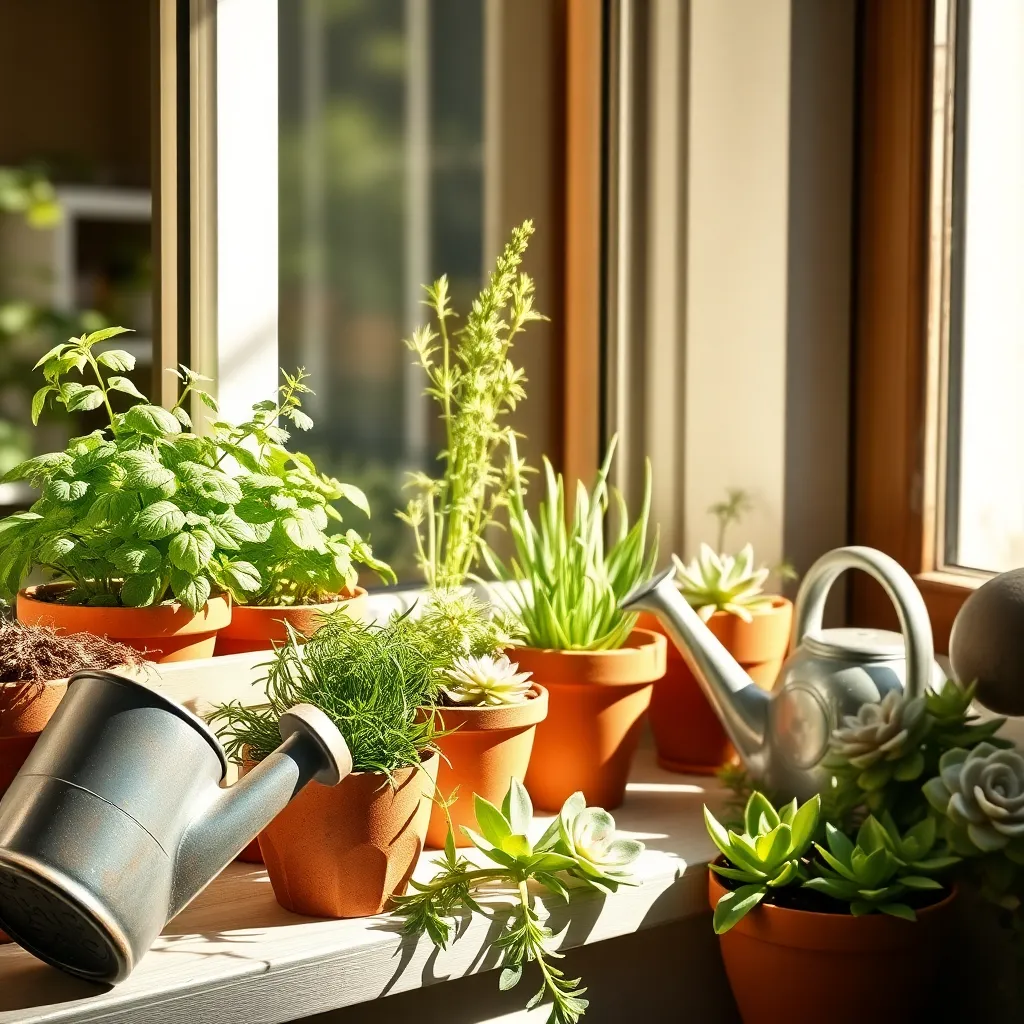
Window sills are a fantastic opportunity to expand your gardening space, particularly in small living areas. Choose plants that thrive in the light conditions your window provides, such as succulents for sunny windows or ferns for shadier spots.
To ensure healthy growth, use pots with drainage holes to prevent waterlogging and root rot. Opt for a well-draining soil mix specific to your plant type; for example, cacti benefit from sandy, gritty soils, while herbs prefer a loamy, nutrient-rich mix.
Regular watering is crucial, but it should be based on the specific needs of your plants. A simple test is to stick your finger an inch into the soil; if it’s dry, it’s time to water, but if it’s still moist, wait a few more days.
For those looking to maximize their window sill garden, consider using multi-tiered planters or stackable pots to increase the number of plants you can accommodate. Additionally, rotating your plants occasionally will ensure that all sides receive equal sunlight, promoting even growth and preventing leaning.
Choose Compact Plant Varieties
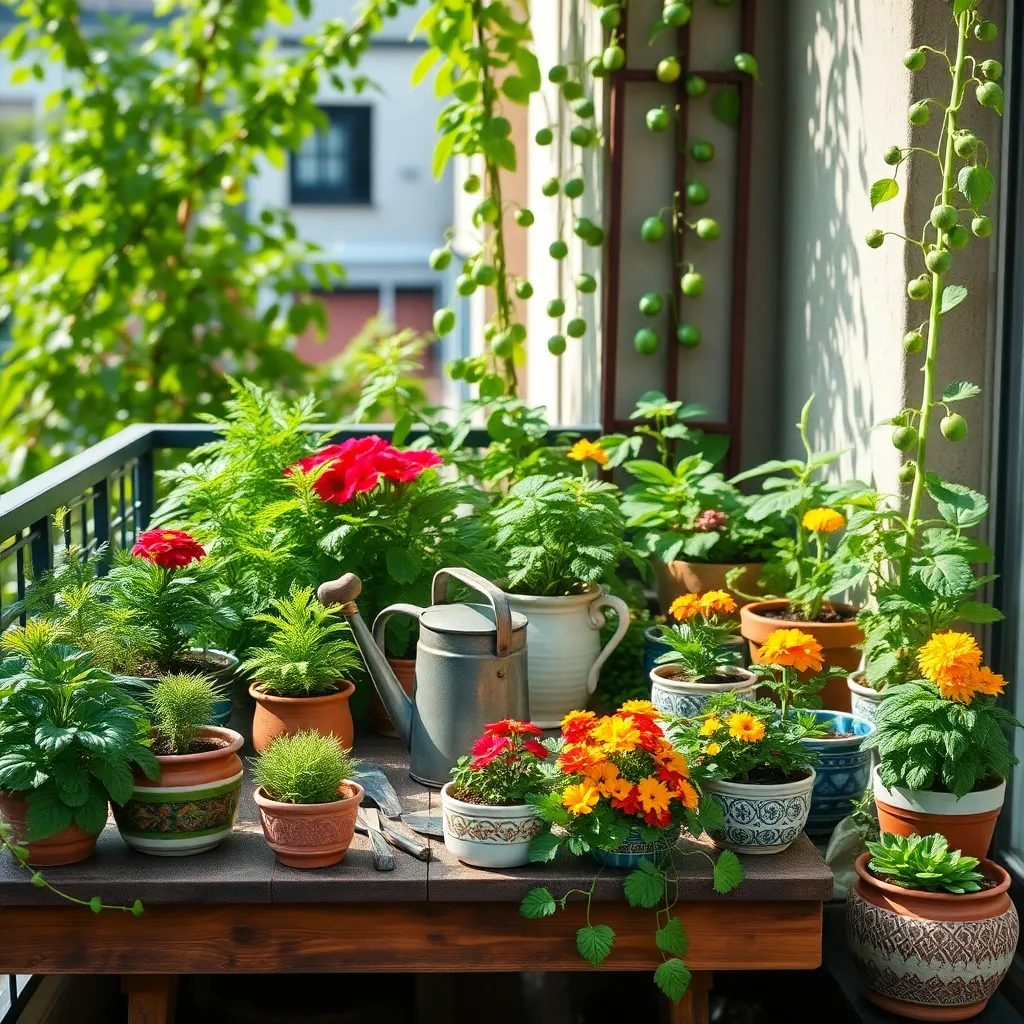
When working with limited space, choosing compact plant varieties is essential for maximizing your garden’s potential. Opt for dwarf or miniaturized versions of your favorite plants, as they are specifically bred to thrive in smaller environments.
Consider growing compact vegetable varieties such as ‘Tom Thumb’ peas or ‘Baby Belle’ peppers, which yield bountiful harvests without sprawling. These plants require less soil volume and are perfect for container gardening on balconies or patios.
Herbs like basil, thyme, and chives are naturally compact and easy to maintain, making them ideal for window sills or small pots. Ensure they receive at least six hours of sunlight daily and water them moderately to keep the soil moist but not waterlogged.
For flower lovers, compact marigolds, petunias, and zinnias can create a vibrant display without overwhelming your space. Plant these in well-draining soil with a balanced fertilizer to encourage robust blooms and maintain healthy growth.
Incorporate Hanging Planters Smartly
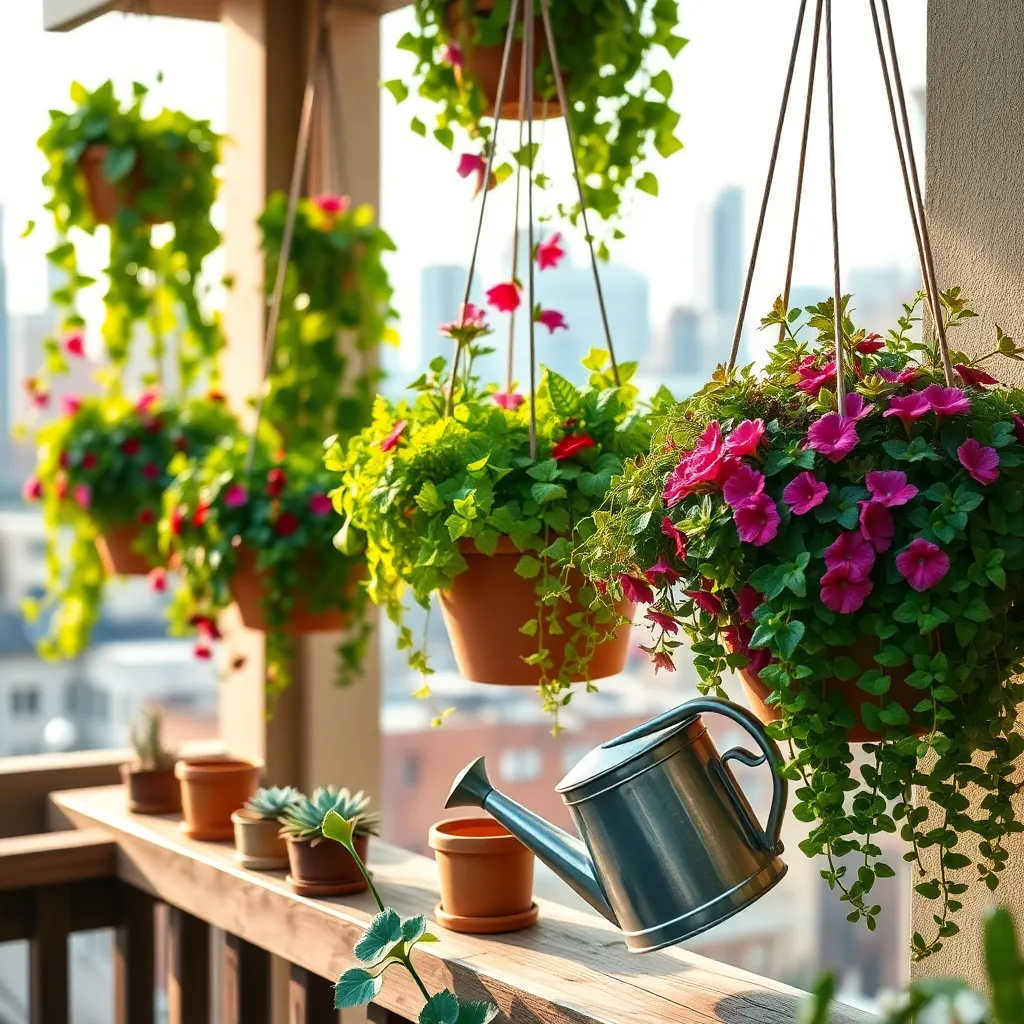
Hanging planters are an excellent way to maximize space in small gardens, allowing you to enjoy greenery without sacrificing valuable ground area. Choose lightweight containers with good drainage to prevent water from pooling and damaging your plants.
Consider using coco coir or moss liners, which help retain moisture while still allowing for adequate air circulation. Opt for a potting mix specifically designed for hanging baskets, as it often contains additives that improve water retention and nutrient delivery.
When selecting plants for your hanging planters, look for species that thrive in elevated environments, such as trailing vines or compact flowering plants. Herbs like thyme and oregano are great choices, as they are hardy and can handle the fluctuating conditions of a hanging planter.
For those with more gardening experience, experiment with vertical arrangements to create a cascading effect, mixing textures and colors for visual interest. Regularly rotate your planters to ensure even growth and exposure to light, and water them more frequently than ground-level pots, as they tend to dry out faster due to increased airflow.
Implement Container Gardening Techniques
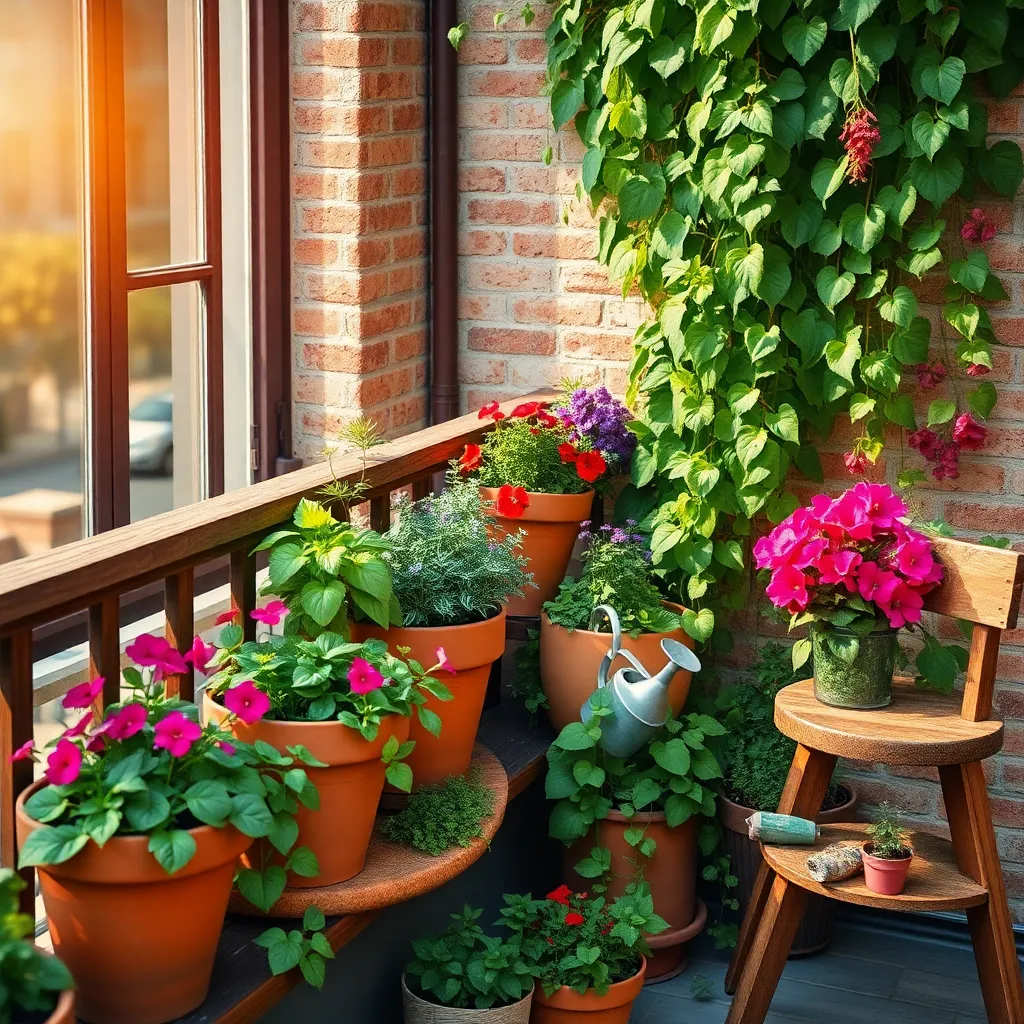
Container gardening is an excellent solution for small spaces, allowing you to maximize your growing area without needing a traditional garden bed. To start, select containers that are at least 12 inches deep and have drainage holes to prevent waterlogging, which can damage plant roots.
When choosing plants, focus on those that thrive in confined spaces, such as herbs, lettuce, or compact tomato varieties. Ensure your containers are filled with a high-quality potting mix, as garden soil is too dense and can suffocate roots.
Watering is crucial in container gardening because pots tend to dry out faster than garden beds. Check the moisture level daily by sticking your finger an inch into the soil; water when it feels dry to the touch, ensuring consistent moisture without oversaturation.
For gardeners seeking a more advanced approach, consider using self-watering containers. These containers have a reservoir at the bottom that provides a steady supply of water, reducing the frequency of watering and helping maintain optimal moisture levels for your plants.
Conclusion: Growing Success with These Plants
As we explored ‘Simple Gardening Ideas for Small Spaces,’ we uncovered five key concepts that mirror the nurturing required in relationships. First, we learned the importance of choosing the right plants, just as we should choose the right words and actions that foster growth in our relationships. Second, we discussed maximizing vertical space, reminding us to elevate our connections by seeking new perspectives. Third, we emphasized the value of consistent care, paralleling the need for regular attention and effort in relationships. Fourth, we highlighted the role of creativity in utilizing small spaces, akin to finding innovative solutions to relationship challenges. Finally, we saw how patience in gardening reflects the patience needed to see relationships thrive over time.
To take immediate action, consider starting a small gardening project with your partner or a loved one. This shared activity can cultivate both your garden and your bond.
Bookmark this article to revisit these insights and strategies, ensuring they’re at your fingertips whenever you need a reminder. As you continue to nurture your relationships, remember that small, consistent efforts can lead to flourishing success. Your journey toward stronger relationships begins today—take that first step and watch your connections bloom.
